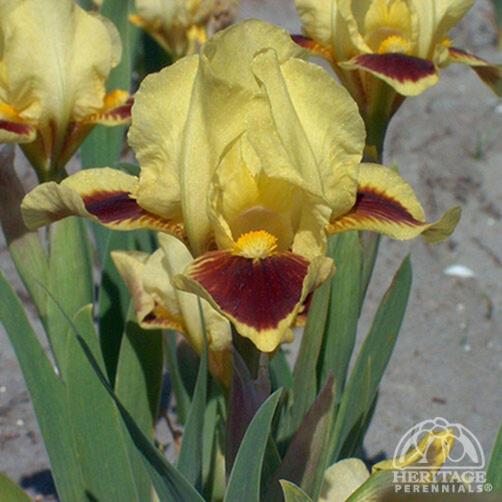Iris ‘Fireplace Embers’
Plant number: 1.295.170(=pumila) Standard Dwarf Bearded Iris are much shorter than the Tall Bearded types, but equally as colourful and beautiful in the border. Plants form a clump of green sword-shaped leaves, blooming in mid-spring. This selection is brightly coloured with yellow standards and large patches of maroon on yellow falls. Choose a sunny position with a well-drained, loamy soil. Bearded Iris are heavy feeders, so plan to fertilize in early spring, and again in late summer. Plants should be divided every 3 to 4 years, in August. Be on the watch for Iris borer. Excellent for cutting. Dwarf bearded Iris are also often described as I. pumila. CAUTION: Harmful if eaten. Further details for |
| All 122 results here | Alphabetical list of all 4,000+ perennials here |
Iris ‘Fireplace Embers’
Plant number: 1.295.170(=pumila) Standard Dwarf Bearded Iris are much shorter than the Tall Bearded types, but equally as colourful and beautiful in the border. Plants form a clump of green sword-shaped leaves, blooming in mid-spring. This selection is brightly coloured with yellow standards and large patches of maroon on yellow falls. Choose a sunny position with a well-drained, loamy soil. Bearded Iris are heavy feeders, so plan to fertilize in early spring, and again in late summer. Plants should be divided every 3 to 4 years, in August. Be on the watch for Iris borer. Excellent for cutting. Dwarf bearded Iris are also often described as I. pumila. CAUTION: Harmful if eaten. Further details for |






